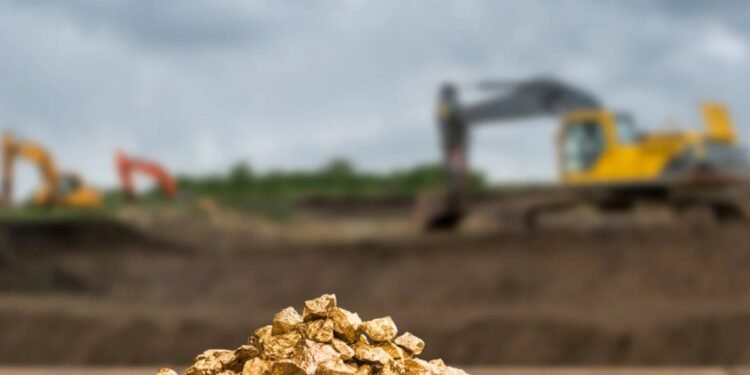Gold miner, AngloGold Ashanti, has recorded a 20 percent jump in third-quarter production, helping it bring costs down by 6 percent from the same period a year earlier.
The company, AngloGold, which mines in Argentina, Australia, Brazil, the Democratic Republic of Congo, Ghana, Guinea, and Tanzania, produced 738,000 ounces of gold as of September 2022, in the third quarter, boosting earnings by 5% to US$472 million.
Alberto Calderon, the Chief Executive Officer of AngloGold Ashanti, commenting on the performance, noted higher gold content in mined ore and efficiency gains helped offset the impact of rising inflation. Price increases for fuel and reagents used to process ore have eaten into earnings for many mining companies. “Inflation impacts all of us, but we have to counter it as best as possible,” he stated.
All-in-sustaining costs– a measure of the overall cost of production, fell to US$1,284 an ounce from US$1,362 an ounce.
Calderon, moreover, stated that rising ore grades across AngloGold Ashanti’s mines are the result of increased capital expenditure starting to come to fruition, driving greater predictability. “Mine planners can optimise the mines in a better way,” he said.
The Obuasi mine In Ghana, which is increasing production, also contributed to the higher grades. Obuasi has a recovered grade of 7.3 grammes of gold per tonne, compared to a group average of 2.2 grammes per tonne.
AngloGold Ashanti’s Johannesburg-listed shares have fallen about 28% this year, weighed down by a decline in the price of gold.
Gold prices have tumbled to around US$1,650 an ounce from above US$2,000 in March, as the U.S. Federal Reserve and other central banks raised interest rates rapidly to tackle soaring inflation.
Inflationary Pressures to Ease Next Year
However, AngloGold Ashanti CEO expects inflationary pressures to ease next year, adding that profit and costs would be at the top end of guidance this year.
“Lower commodities prices in 2023 are likely to bring the company’s costs inflation down to a single-digit percentage from a peak of about 13 percent.”
Alberto Calderon
Calderon estimated that 40% of the cost increase in the third quarter of this year was attributable to diesel prices.
Meanwhile, the company reported first-half production was up 3% year on year at 1.233 million ounces and said production would increase in the second half to meet 2022 guidance of between 2.55 and 2.8 million ounces.
The Company declared an interim dividend of 29 US cents per share, or $121 million, and remains on track to achieve full-year guidance.
Production for the first six months of 2022 was 1.233 Moz. Production growth was underpinned by higher grades and tonnes processed, leading to marked improvements from the Australian and Latin American operations, which offset lower production from Kibali and Geita.
Obuasi continued its ramp-up through the period and is on track to achieve its annual production guidance of 240,000 oz to 260,000 oz for 2022.
READ ALSO: It’s Time to Transform Banking and Build Smarter, Greener Finance Together- Huawei CEO





















